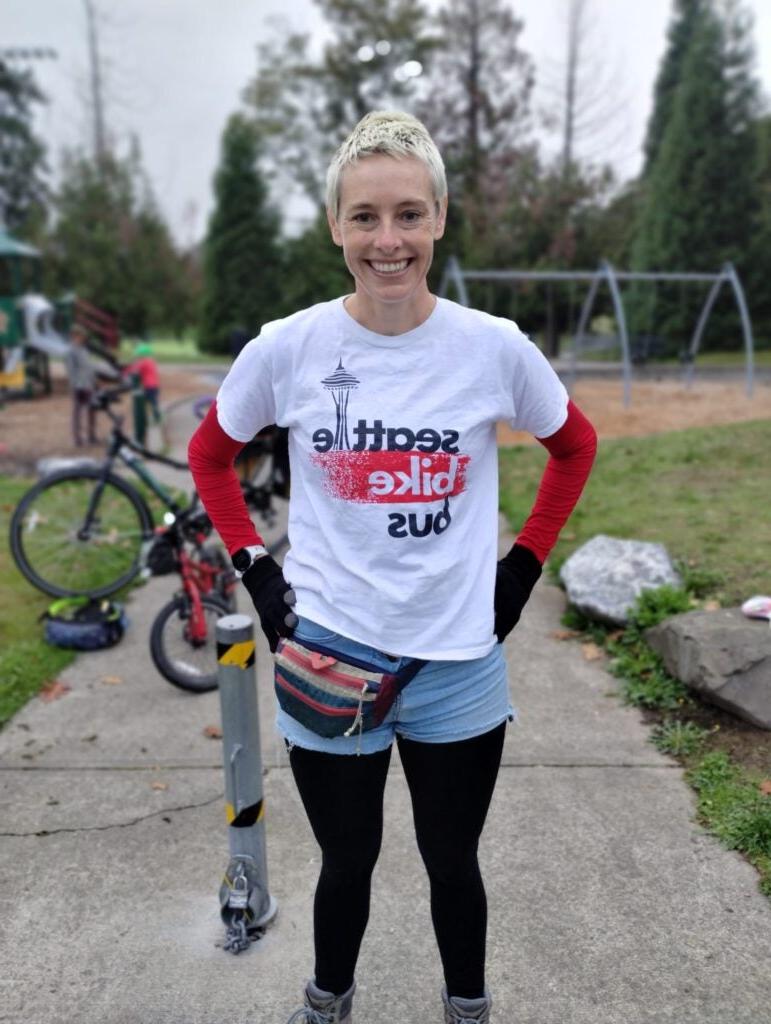Get Involved
Walk, Bike, Roll Volunteer Information
Thank you for volunteering to support walk, bike, and roll programs!
Walking and biking to school is a fun way to get exercise, reduce traffic and pollution, build community, and promote youth independence. Studies say students who walk and bike to school arrive more alert and ready to learn.
These benefits are possible through the commitment and dedication of volunteers like you!
Step 1: Sign Up
Visit the SPS Volunteer Page (below) to apply to be a Category A volunteer. Please allow time for processing (about 2 weeks) before starting your program or event. All Walk and Bike volunteers must be registered before their commitment. Contact your school’s volunteer liaison for assistance and verification.
Step 2: Find a Program
Get connected to a walk or bike program at your school or in your neighborhood. Email Brooke to connect to group organizers.
Don’t see your school on the list? Check with your school and your neighbors to see if other families or students are already walking and biking to school. Join in if possible, and start a program or event to include more people!
Start a Program

Starting a program can help connect more students and families, help caregivers share responsibilities, make the trip more fun!
Check out the Campaign Guide in the “Get Involved” section of the Seattle Department of Transportation page for details on starting programs and gaining support at your school.
Recruit Volunteers
Need more volunteers to support your program?
- Connect to your school community
- Your Safe Routes Coordinator can deliver a presentation to your PTSA, School Building Safety Committee, or your staff.
- Reach out to local organizations and community groups who have a stake in youth safety, environmental action, or transportation to request volunteer support and help getting the word out
- Community partnership programs at your school: Check your school website for a full list of partners.
- Examples include: City Year, Girls on the Run, Peace Streets, RBAC, and the Boys and Girls Club
- Seattle Neighborhood Greenways is a volunteer organization to reclaim Seattle’s streets and make them safer for all ages, ethnicities, genders and abilities. Connect with your local neighborhood group to share about your program and volunteer needs.
- Local bike shops and organizations
- Libraries
- Community Centers
- Places of worship
- Community partnership programs at your school: Check your school website for a full list of partners.
Transportation News
Seattle Public Schools is actively monitoring weather forecasts and road conditions.
Brooke Nelson, Program Coordinator for Safe Routes to Schools Brooke Nelson has been hired as program coordinator of Safe Routes to Schools (SRTS). In this role, Brooke will work with the City of Seattle to create an active transportation program available to all public schools in Seattle and focus on Tier 1 and 2 equity […]
Part of the 2023 Budget plan includes changes to transportation services. The changes provide significant budget savings without large-scale changes.
A group of students from Denny International Middle School walked to school together on Nov. 14 to celebrate a civil rights pioneer.




